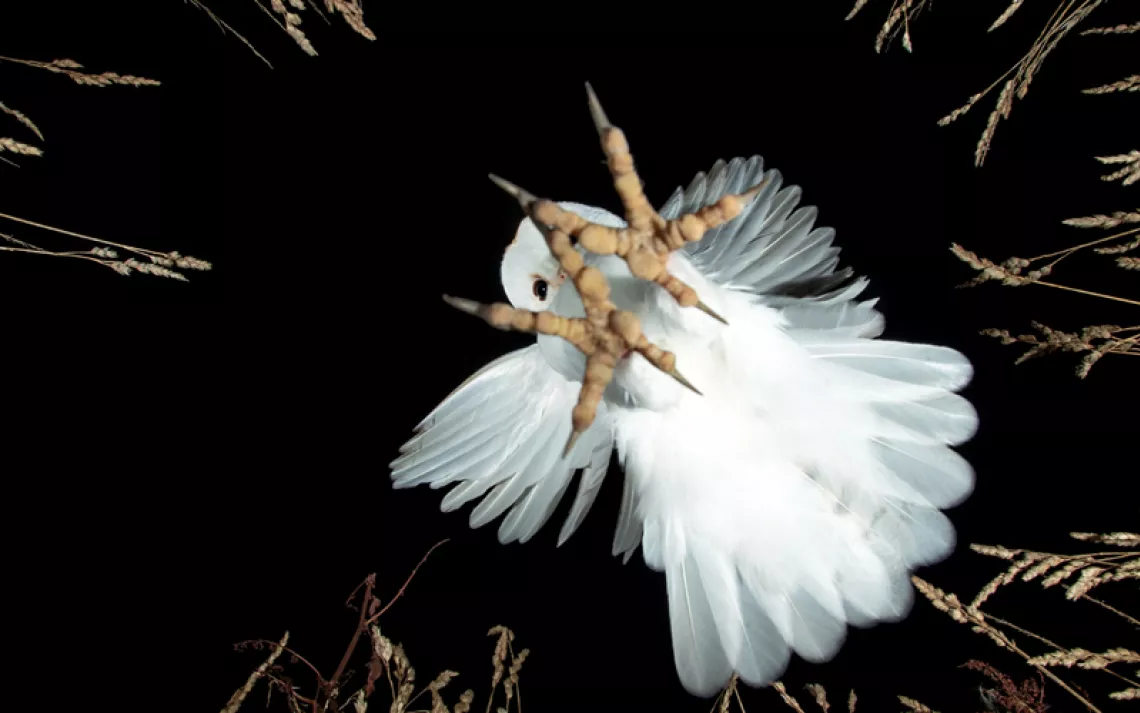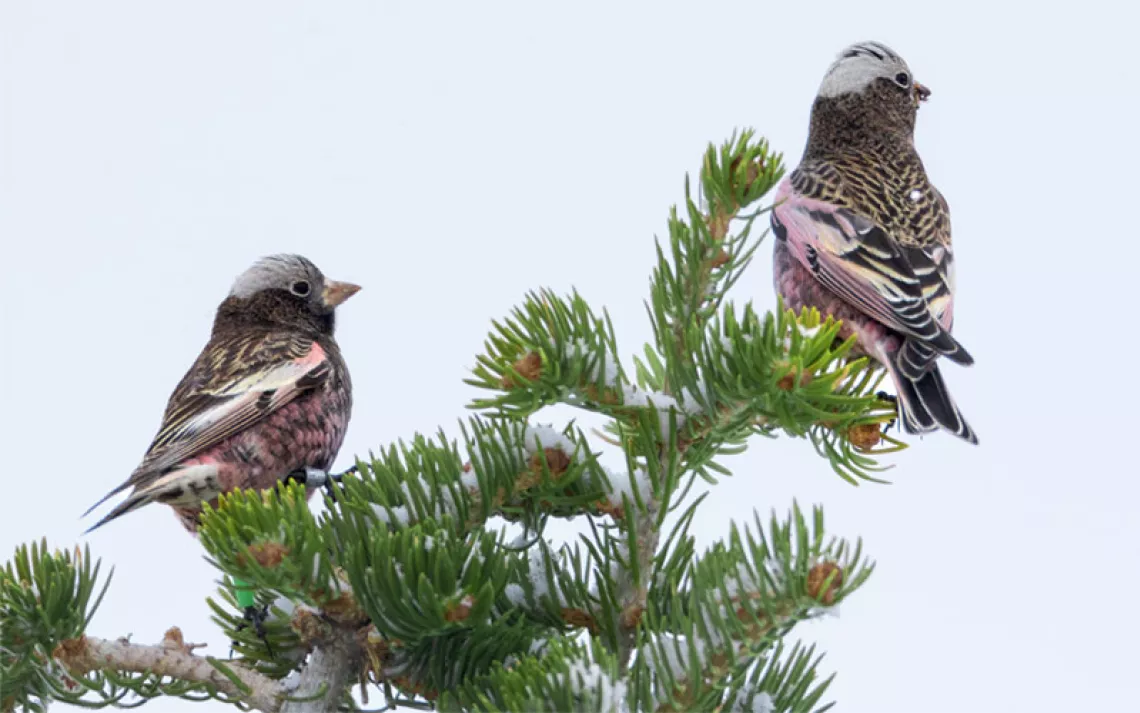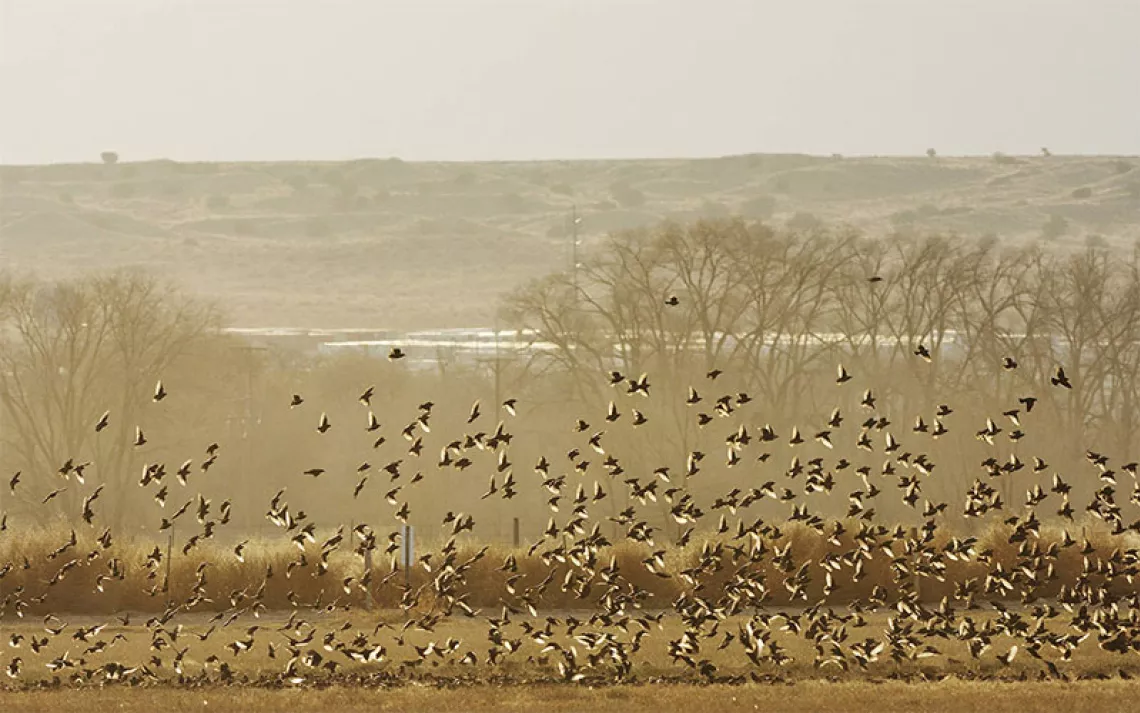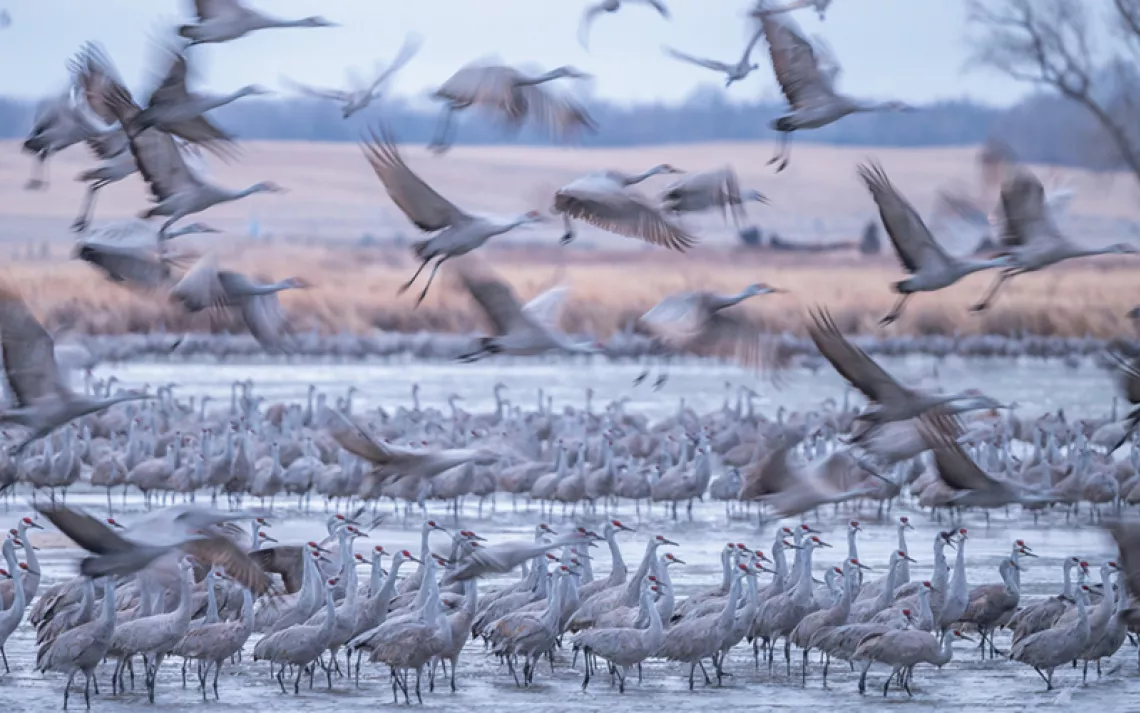Even Turkey Vultures Face an Uncertain Future in the Anthropocene
The success of these birds dwindles as human-caused threats multiply
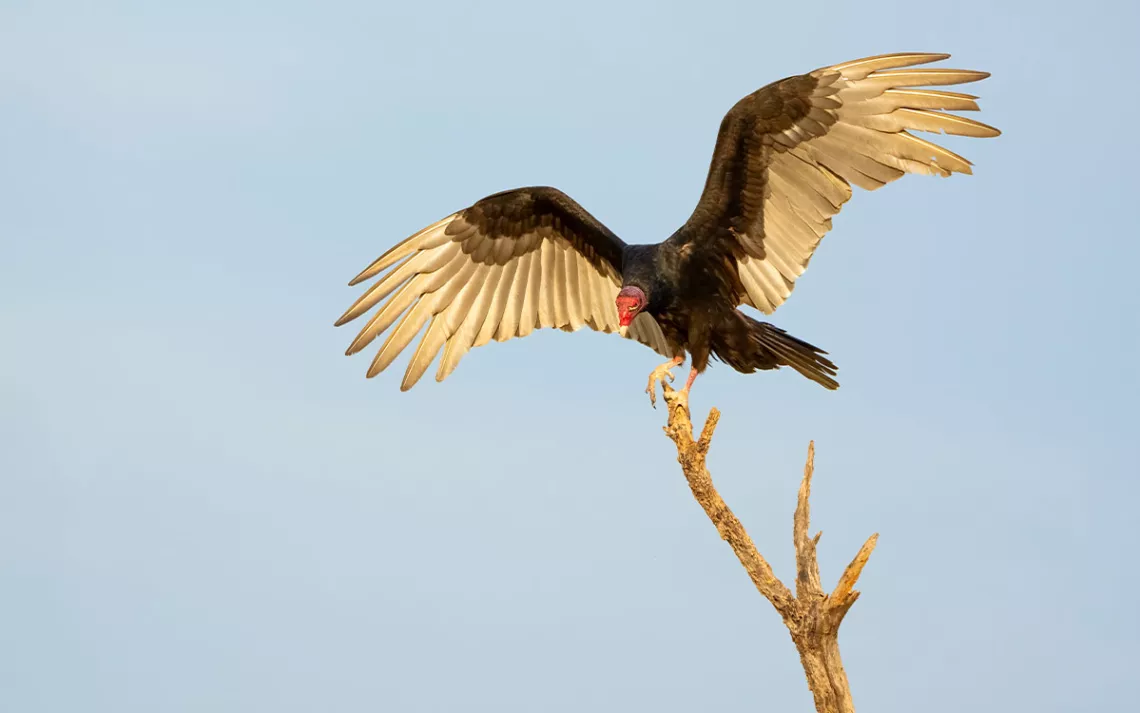
Turkey vulture (Cathartes aura) in Texas. | Photo by KenCanning/iStock
Dozens of turkey vultures occupy the tallest tree in my Durango, Colorado, neighborhood each evening, with the result resembling something out of a Tim Burton film. Graceful flyers, the vultures glide in after a day of scavenging. But their grace quickly fades as the huge birds crash, one after another, into the beleaguered tree, knocking down branches and (occasionally) other vultures as they jockey for the best perches.
Evan Buechley, an ornithologist and ecologist, travels the world, studying vultures and implementing measures to protect them. This is important, as the turkey-vulture-laden tree in my neighborhood belies the precipitous decline in vulture populations globally. For example, despite protections in North America, California condors, a type of vulture, number just over 500.
Buechley—fittingly pronounced “beak-lee”—is vice president of conservation for the Peregrine Fund's international programs. He finds the ecology of a carrion diet “beautiful in its own gross way” and estimates that scavenging cycles more nutrients back into an ecosystem than does predation, though predation is more popular for research grants and nature shows. Hannah Partridge agrees that vultures are under-researched. A doctoral student at the University of North Carolina, Partridge studies vulture behavior. “I saw that vultures were really overlooked,” she says regarding her choice of thesis topic.
Unlike California condors, turkey vultures number in the millions. So why are they so successful despite declines of their avian cousins? "It’s a bit of a conundrum.... And I’m not sure that anybody totally has the answer," Buechley said, though he speculates that reproductive biology is one reason. Compared with condors and other vulture species, turkey vultures reach sexual maturity faster and hatch more chicks annually.
How turkey vultures locate dinner may also contribute to their success. Most vultures rely on sight to find carcasses. Turkey vultures, instead, employ an exquisite sense of smell. “They’re really good at locating carcasses that may be buried or covered in leaves, including finding moles or snakes that are in a hole underground,” Buechley noted. The ability to find what other vultures miss and the abundance of small animals (such as moles) compared to large (such as elk) means better food availability. Buechley also hypothesizes that large animals bioaccumulate a higher level of environmental toxins than small animals. While one large carcass can poison the entire local population of vultures sharing it, a small carcass, more typical of a turkey vulture diet, will harm only one individual if contaminated.
Adaptability to human activity may also underlie their current population stability, say ornithologists. “They have this ability to adapt to a whole variety of environments and situations,” Partridge said. For example, turkey vultures in some regions flock to urban areas, while elsewhere, they prefer relatively less developed areas.
The success of turkey vultures in the Anthropocene conceals a greater threat to their future. Buechley notes that toxins in carrion are the biggest global threat to vultures. Accordingly, recent research shows that a large proportion of Oregon and California turkey vulture populations have picked up rat poison from contaminated carcasses. And in the Oregon study, higher rodenticide loads correlate with poorer physical condition. In addition to rodenticides and lead, turkey vultures ingest DDT and DDE in carrion, which correlates with thinner eggshells. Though banned, these “forever chemicals” persist in the environment. Partridge’s recent research shows that vultures also ingest a range of plastics, which could ultimately cause health problems.
Conservation groups and governments have started to address toxic threats to vultures. For instance, the anti-inflammatory drug diclofenac caused the near extinction of vultures in South Asia when they fed on the carcasses of treated animals. Diclofenac is now banned for use in livestock, and scientists have identified comparable priced anti-inflammatory drugs that don’t kill vultures. Similarly, California banned lead ammunition, which contaminates carrion the birds feed on, and restrictions are being phased in elsewhere. While this angers gun rights groups and some hunters, others are getting on board with using lead-free ammunition, and ammunition manufacturers are developing and offering lead alternatives to reduce threats to wildlife while meeting the ballistic needs of hunters.
Contaminated carrion is not the only issue threatening the birds. For instance, collisions with power lines and wind turbines are also responsible for vulture deaths, especially when such infrastructure is located along vulture migratory routes. Researchers are harnessing citizen science in the US for monitoring collisions, with the data helping to guide policy decisions and development plans for energy infrastructure. While the project is focused on eagles, the resultant policy shifts may benefit vultures and other soaring birds.
Deliberate killing of vultures is also a problem, as they’re often mistaken for aggressive predators. Partridge has spoken with community members who’ve mentioned neighbors or family that shoot black vultures—another successful species—because they don’t like them on their property. People often consider vultures pests because they sometimes damage property. “They’re not especially loved in the US,” she says.
Yet turkey vultures are an incredibly important species in the ecosystem. They eat an astounding 3 billion pounds of carrion annually in their home, the Americas. Their stomach acid is at least 10 times stronger than ours, and their specialized immune system kills potential pathogens in their meal. Accordingly, their scientific name, Cathartes aura, means “golden purifier.” Without vultures, part-time scavengers—such as rats, crows, and feral dogs—with less caustic digestive tracts increase in numbers, contracting and spreading diseases such as rabies, anthrax, and plague from carcasses.
Partridge works with the Charlotte Action Research Project in North Carolina to investigate effective ways to mitigate vulture-human conflicts. And biologists with the National Wildlife Research Center have developed evidence-based methods for repelling vultures, such as hanging a vulture effigy or using a sound- or light-generating device to deter them from a roost.
Wherever conservation efforts are being directed, Buechley stresses the importance of listening to the communities involved: “Ultimately, all successful conservation is going to be driven by local buy-in for it.” In countering the multiple threats to vultures, he comments, “One of the really important steps is increasing the scientific understanding of and public awareness around the importance of vultures in ecosystems.” Indeed, protecting vultures—nature’s cleanup crew—also protects human health. Encouragingly, some communities now celebrate their turkey vultures with festivals such as Vulture Fest, Buzzard Day, and the Buzzard Bash, which, together with International Vulture Awareness Day, promote the appreciation of these indispensable scavengers.
Fall is here, and the neighborhood turkey vultures will soon head south and live up to their “golden purifier” name in warmer climates before returning to grace their favored tree in the spring. Hopefully, these ecologically important birds will remain abundant. As Partridge comments, “We’re the issue and the solution.”
 The Magazine of The Sierra Club
The Magazine of The Sierra Club
